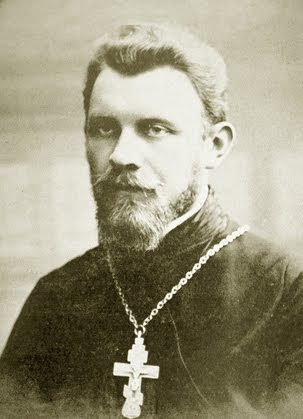The Fourth Sunday of Lent is commonly known as “Laetare Sunday” after the words of the Introit of the Mass- Laetare Jerusalem: et conventum facite omnes qui diligitis eam: gaudete cum laetitia, qui in tristitia fuistis: ut exsultetis,et satiemini ab uberibus consolationis vestrae. But another tradition calls it the “Sunday of the Golden Rose", from a custom observed at Rome of the pope blessing a rose made of pure gold mixed with musk and balm. The Stational Church today is the Basilica of the Holy Cross in Jerusalem - representing the joys of the world to come in the New Jerusalem, our Heavenly city, for which the rose is symbolic of the eternal bloom and freshness of paradise.
 |
"We read that the Lord Jesus, at the approach of his passion, wishing to strengthen His disciples against the scandals and humiliations to come, foretold to them often the glory of His resurrection, and even showed his glory to three of them in His transfiguration on Tabor... It is to follow the steps of Divine Master that, on the fourth Sunday of Lent - i.e. the Sunday preceding the Passion Sunday which opens the way of sorrow - the Sovereign Pontiff, to soften the sadness of the days which are to come, announces to the faithful the glory of the resurrection bearing a golden rose in his hand[...] Our Lord said that "Not Solomon in all his glory was clothed like one of these" (Matt vi: 29). Now the rose is the most beautiful among the flowers. It is then just that it has been chosen to figure the glory of Our Lord. Why is it a golden rose anointed with musk and balm? Gold, the most precious metal, is proper to represent the glory of Jesus Christ in His resurrection. Balm preserves the body from corruption and expresses the immortality of the saviour. Musk is the most odoriferous of the aromatics; it is thus a symbol of the fame of Christ which in His resurrection has everywhere spread like a sweet odour by the ministry of His apostles." - Cardinal Peter of Capua
The exact date of the institution of the custom is unknown, but Pope Leo IX in 1051 speaks of it as an ancient institution during his time. The rose is of a precious metal usually ornamented with precious stones; it is blessed and in times past was carried in procession from the Stational Church of the Holy Cross by the pope himself, blessing the faithful with the rose as he processed from the Basilica. The rose was then presented to a special personage known for devotion to the Catholic faith and their loyalty to the Holy See – particularly in later years to a noble queen or princess. There is a providential link here; since it was a most Christian Queen who gave to us this Church - St Helena being the one who found the relics of the True Cross and kept them in what used to be a part of her palace; eventually transforming into the Basilica of the Holy Cross in Jerusalem.
In more recent years the Golden Rose is given to a special shrine of Our Lady. This is not without reason as Our Lady is called in the Litany of Loreto "Rosa Mystica" and it is said that the rose vestments are a mixture of red and white; that is, a mixture of the blood of Our Lord in His passion and yet the joyfulness that His passion brings us in opening Heaven - which liturgically is represented in red and white vestments respectively. Similarly, Our Lady shares in this blending of the Passion and Joy – the red and the white - as the "Rosa Mystica". As the “Queen of Martyrs” and “Cause of Our Joy” she becomes for us a “Mystical Rose”.
St Bernard especially describes Mary under this title, saying:
"Eve was a thorn, wounding, bringing death to all; in Mary we see a rose, soothing everybody's hurts, giving the destiny of salvation back to all. Mary was a rose, white for maidenhood, red for love; white in body, red in soul; white in her seeking after virtue, red in treading down vice; white in cleansing her affections, red in mortifying her flesh; white in her love of God, red in compassion for her neighbour".
St Therese of Lisieux, so well known for her miraculous roses, describes Our Lady under her title of "Rosa Mystica" in her poem The Dew Divine (it being traditionally understood that the Rose of Sharon refers to Our Lady):
Thou art the Rose of Sharon long foretold,
Still in Thy glorious bud, Thou Heavenly child!
Thy dearest Mother’s arms, so pure and white,
Form for thee now a royal cradle-throne.
The Holy Church today gives us a foretaste of the joys of Easter, tempered however with the knowledge of the sorrow that we have to pass through before the Resurrection. Let us imitate Our Lady - the “Rosa Mystica” and most precious Golden Rose of Heaven - by following in the footsteps of Our Lord for the remainder of Lent, knowing that if we are faithful unto the end we too shall rejoice in the new Jerusalem.
 |
| Pope Benedict XVI prays before Our Lady of Fatima to whom he gave a golden rose in 2010 |




































































2 comments:
What happens to all of these golden roses?
In that poem St Thérèse seems to be saying Jesus the holy Child in her arms is the Rose of Sharon.
Post a Comment